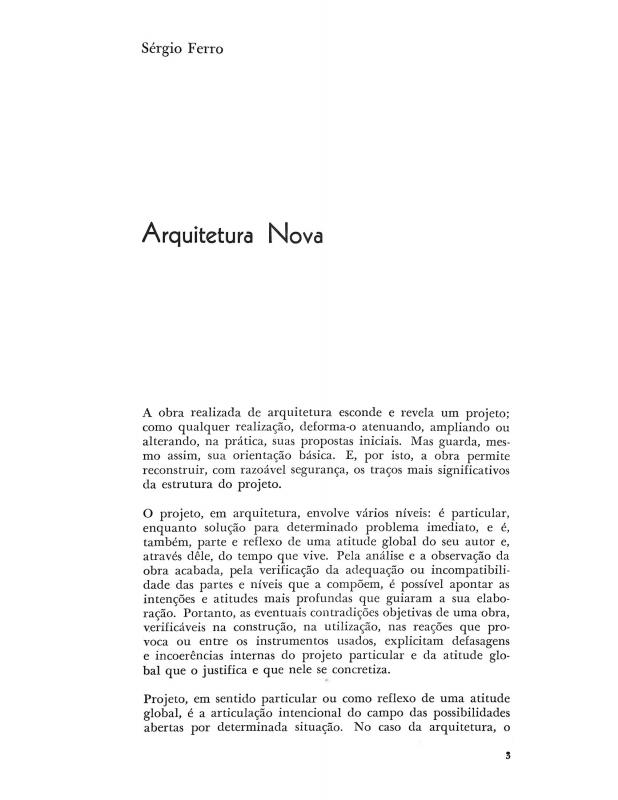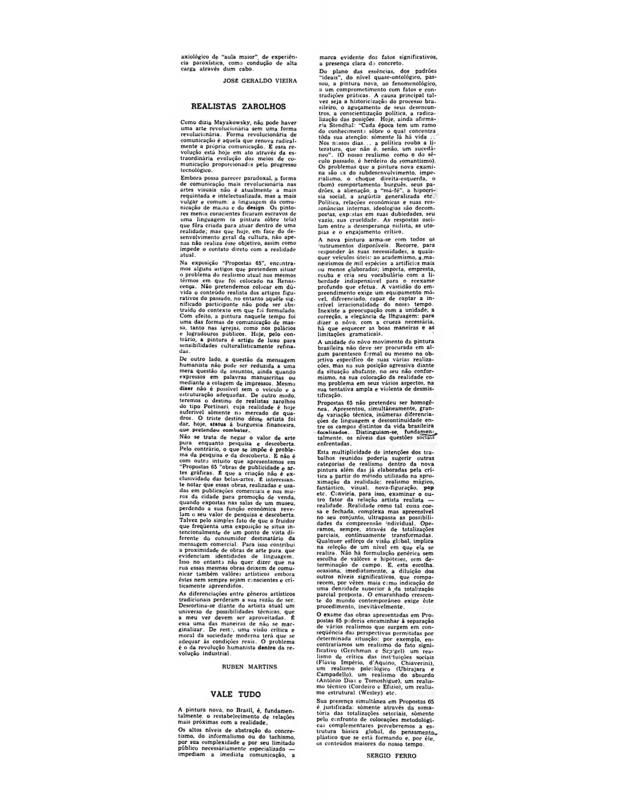Architect and visual artist Sérgio Ferro (b. 1938) graduated while Brasilia was under construction (1956–61); he worked for the architect Francisco Vilanova Artigas (in São Paulo), who was also his teacher, as was Flávio Motta. Ferro, Rodrigo Lefèvre (another architect), and the set designer Flávio Império started the group Nova Arquitetura. Ferro was a fierce critic of the profession, of its medium (drawing), and of what it produced. While still a student, he proposed discussing class struggle and the desirability of creating an alliance between construction workers and architectural draftsmen to generate an alternative aesthetic based on “a poetics of the economy” that would address truly national problems. This article shows that Ferro’s writing was influenced by leftist pro-labor French intellectuals, German artists from the so-called “Frankfurt School,” and Freudian psychoanalysis. His goal is to develop a critical theory with which to correct the flaws in architectural aesthetics and the production system. Both Ferro and Lefèvre had to get out of Brazil during the military dictatorship (1964–85); Ferro became a professor of architecture at the Université de Grenoble (France) in 1972; Lefèvre met a tragic death on a construction site in Guinea-Bissau in the mid-1980s.
Described by Pedro Arantes as part of his thesis (published in two parts in 1976), this article, “A forma da arquitetura e o desenho da mercadoria” [The Form of Architecture and of the Drawing of the Merchandise] appeared in Almanaque: cadernos de literatura e ensaio, no. 2 (São Paulo: Editora Brasiliense, 1976), and in the third issue of “O desenho.”
[As complementary, reading see the following articles by the author in the ICAA digital archive: “Arquitetura nova” (doc. no. 1111153); “Os limites da denúncia” (doc. no. 771159); “Pintura nova” (doc. no. 1090696); and “Vale tudo” (doc. no. 1090648)].



